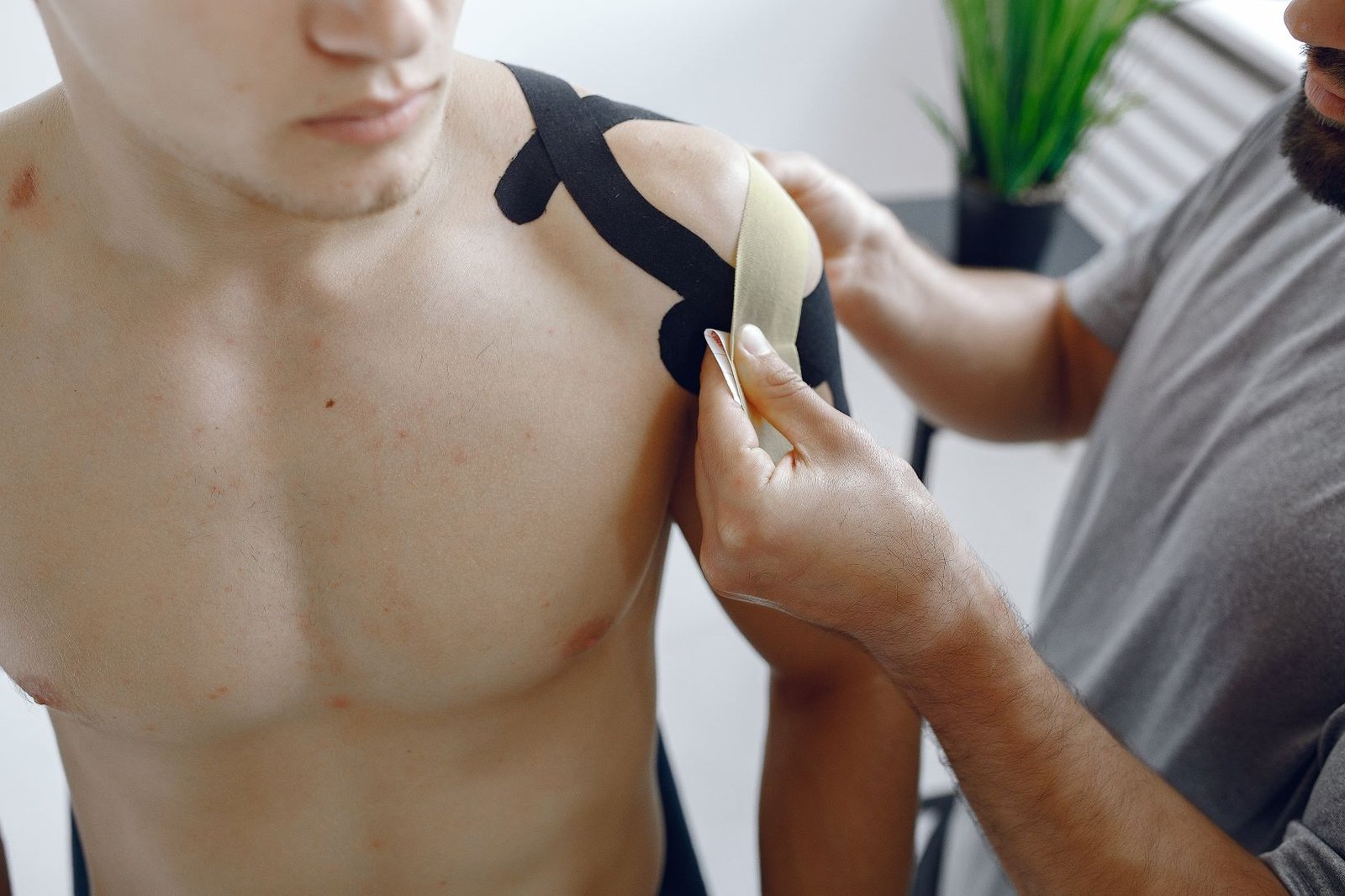
Taping in physiotherapy refers to the application of specialized adhesive tapes to the body to provide support, reduce pain, and promote healing in various musculoskeletal conditions. Different types of tape are used, with the most common being kinesiology tape (often referred to as "kinesio tape") and rigid sports tape. Taping is an integral part of physiotherapy and can serve various purposes. Rigid sports tape, on the other hand, is non-elastic and provides firm support. It is often used for joint stability, such as in the case of ankle or wrist sprains, or to restrict certain movements during the recovery process.

Taping is often used in conjunction with other physiotherapy techniques, including exercises, manual therapy, and modalities like heat or cold therapy. Taping in physiotherapy can be an effective component of a comprehensive rehabilitation program. It is essential to seek the guidance of a qualified physiotherapist or healthcare professional for proper assessment, taping technique selection, and guidance on taping care. Taping should be part of an individualized treatment plan, and it is not a standalone solution for all musculoskeletal conditions.